Abstract
1. There is evidence in the literature of a mutual facilitatory interaction between the arterial chemoreceptor reflex and the alerting stage of the defence reaction, particularly in relation to the patterning of cardiorespiratory activity. The present study has been designed to test the hypothesis that a portion of this interaction involves synaptic interactions within the nucleus tractus solitarii (NTS). 2. The study has involved an analysis of the effective interactions between the stimulation of the arterial chemoreceptors and the hypothalamic defence area (HDA) on the activity of NTS neurones recorded in anaesthetized, paralysed and artificially ventilated cats. 3. A group of eighteen NTS neurones was classified as chemosensitive, on the basis of displaying EPSPs on sinus nerve stimulation (SN) and their failure to show an excitatory response to baroreceptor stimulation. Thirteen of these neurones displayed pronounced excitatory responses to chemoreceptor stimulation. In sixteen of these neurones HDA stimulation elicited an EPSP; in four of these sixteen neurones this early EPSP was followed by an IPSP. In the remaining two (of 18) neurones HDA stimulation provoked no obvious synaptic response but facilitated the efficacy of both chemoreceptor inputs and SN stimulation. 4. Neurones shown to receive convergent inputs from the arterial chemoreceptors (and SN stimulation) and HDA, often displayed excitatory responses to stimulation of other peripheral inputs. Vagally evoked EPSPs were observed in nine neurones, SLN-evoked responses in seven neurones and aortic nerve-evoked EPSPs in three neurones. 5. The organization of these synaptic interactions is discussed and these data are used to explain the pattern of interaction between chemoreceptor, baroreceptor and HDA inputs within the NTS. Conclusions are drawn regarding the functional role of different classes of NTS neurone, based on the findings in this and the accompanying two papers.
Full text
PDF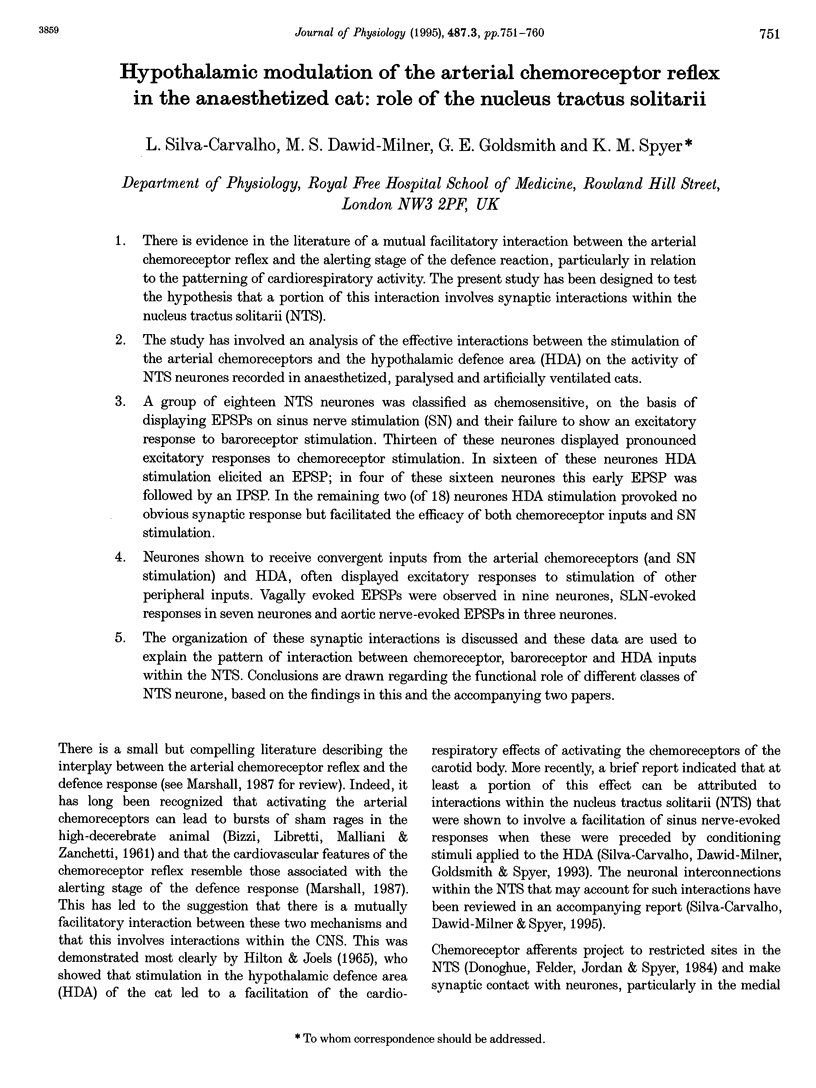
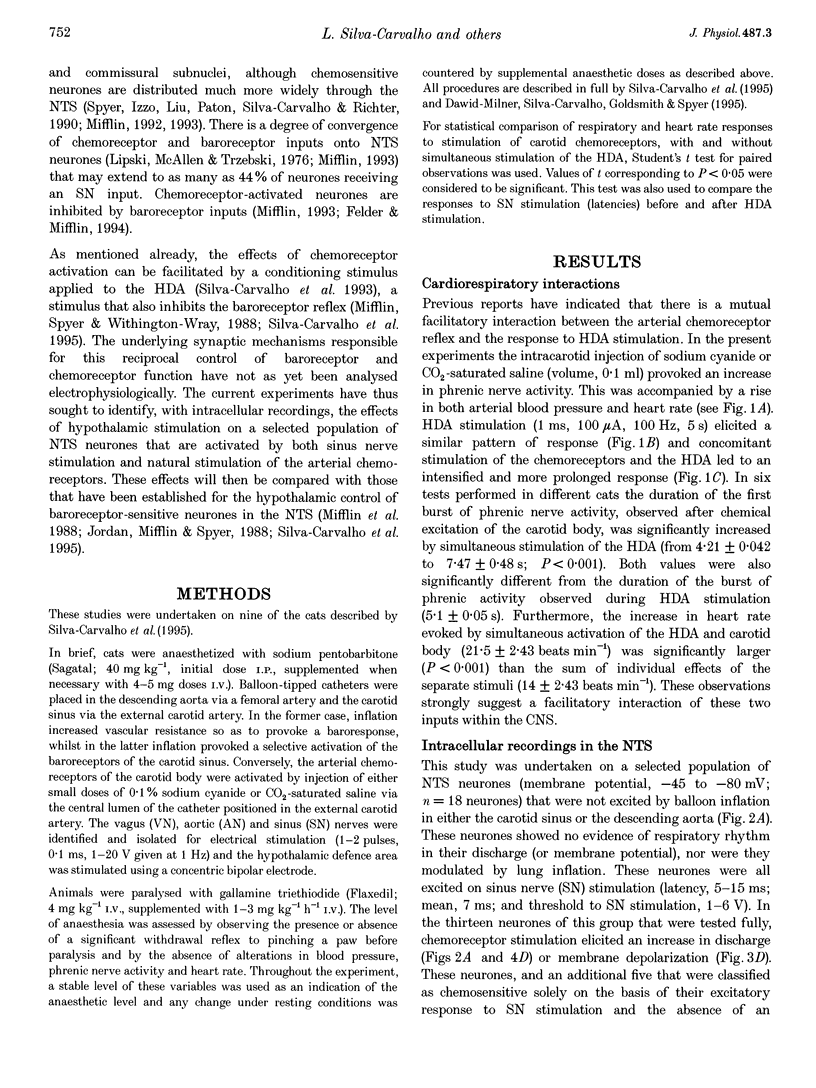
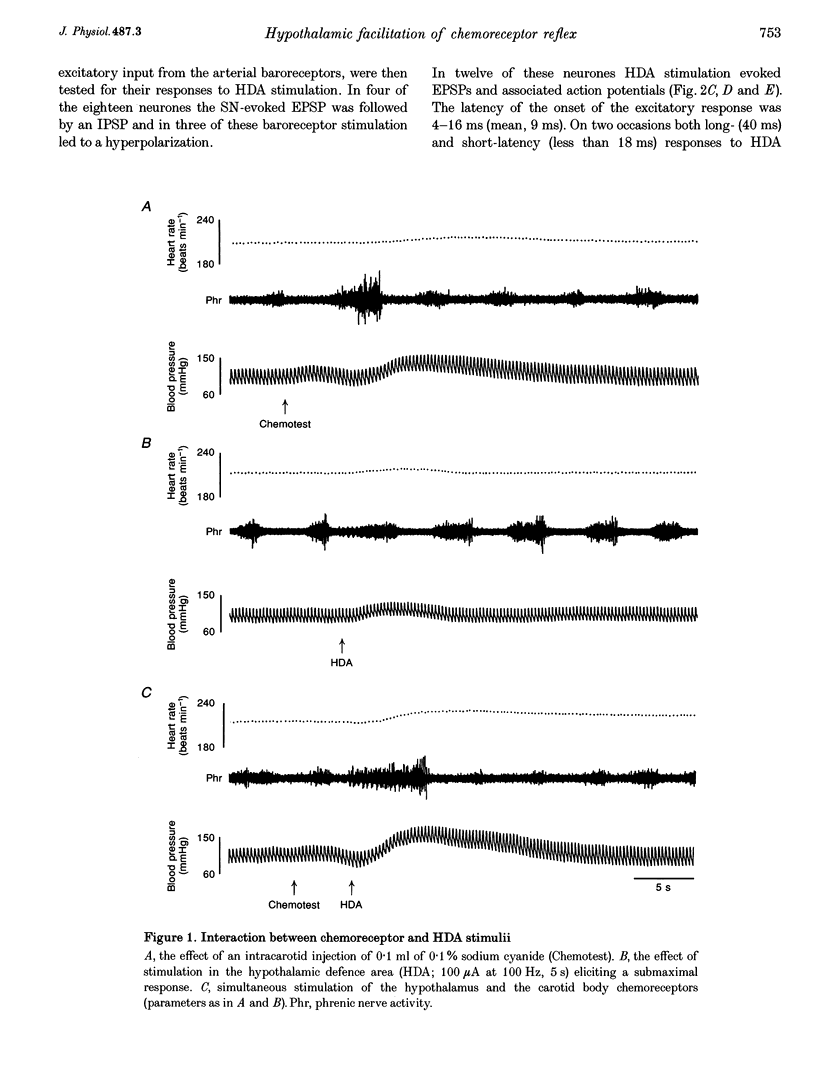
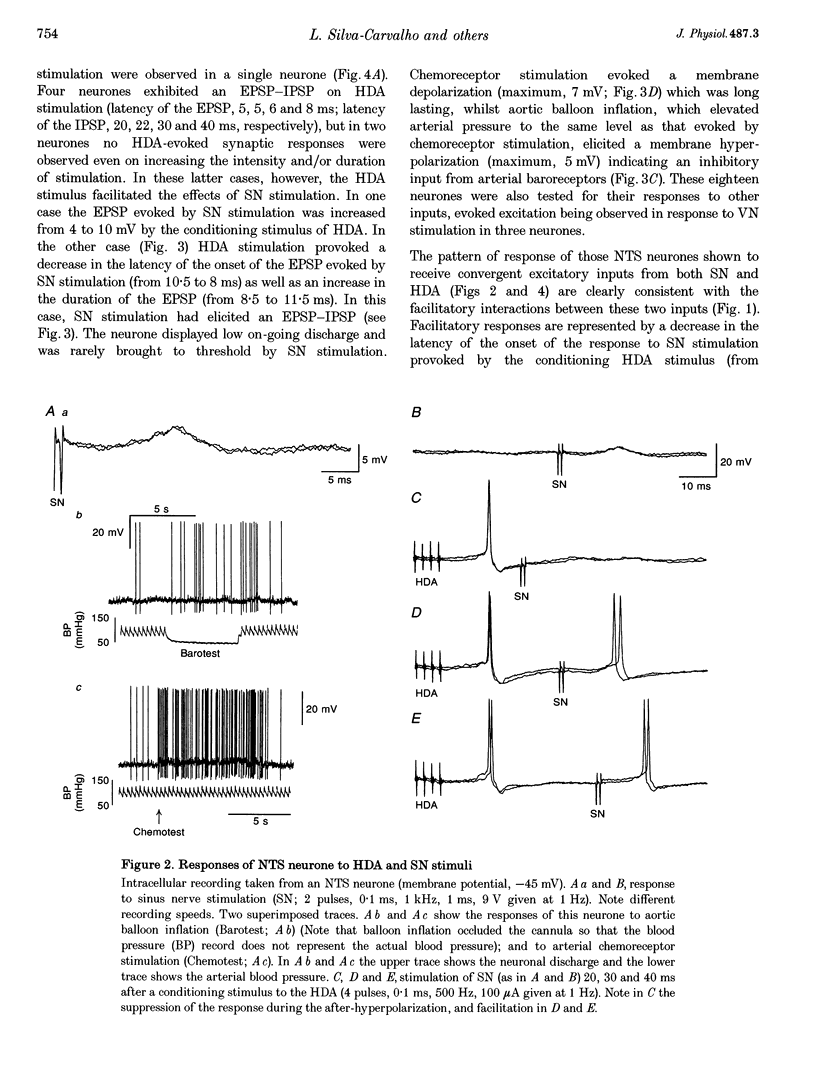
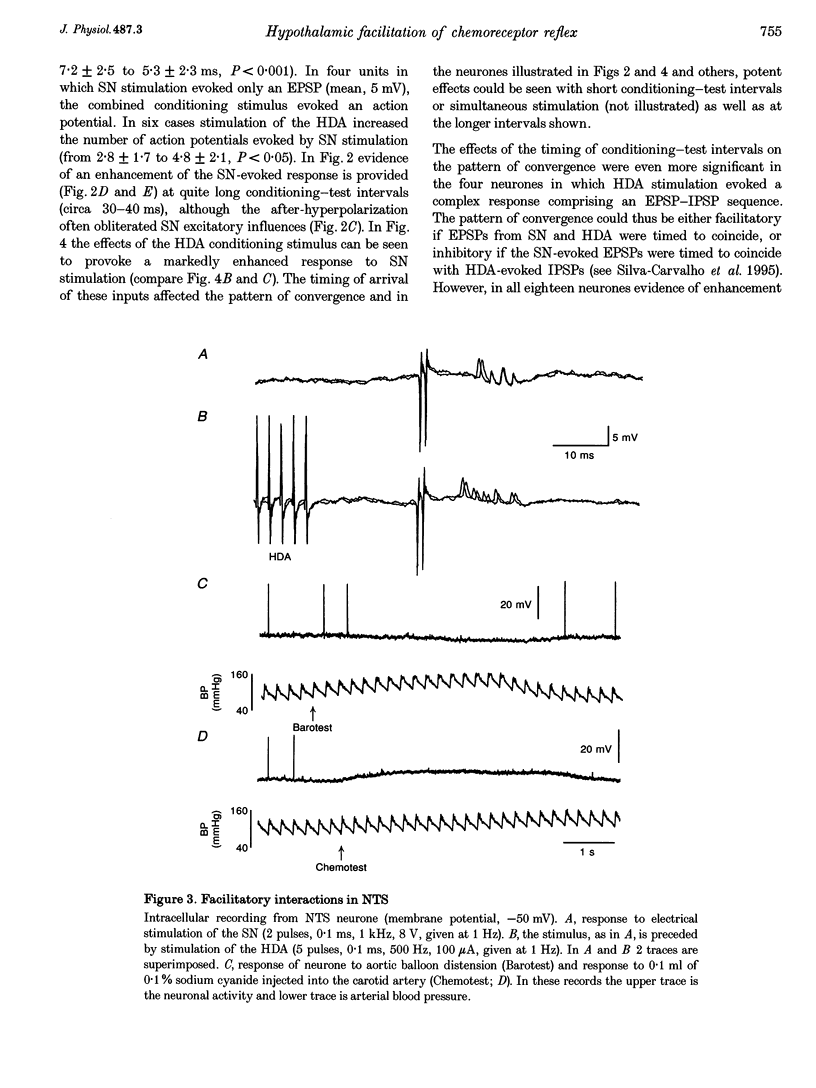
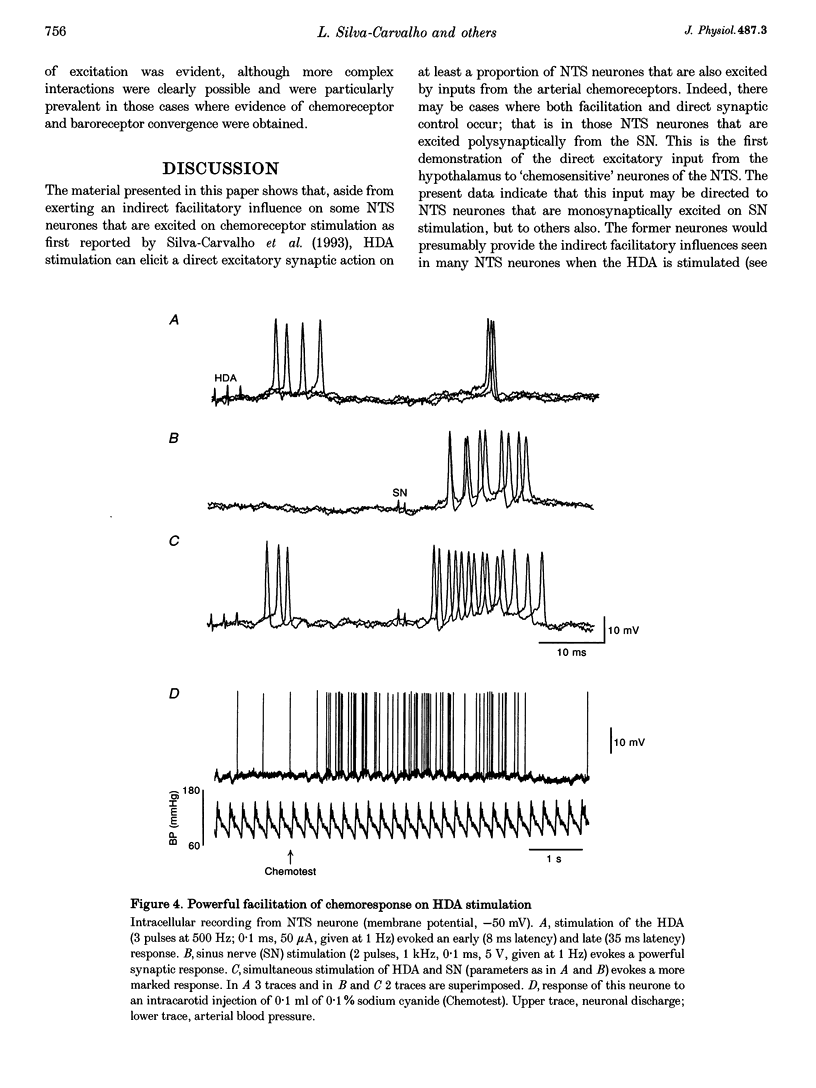
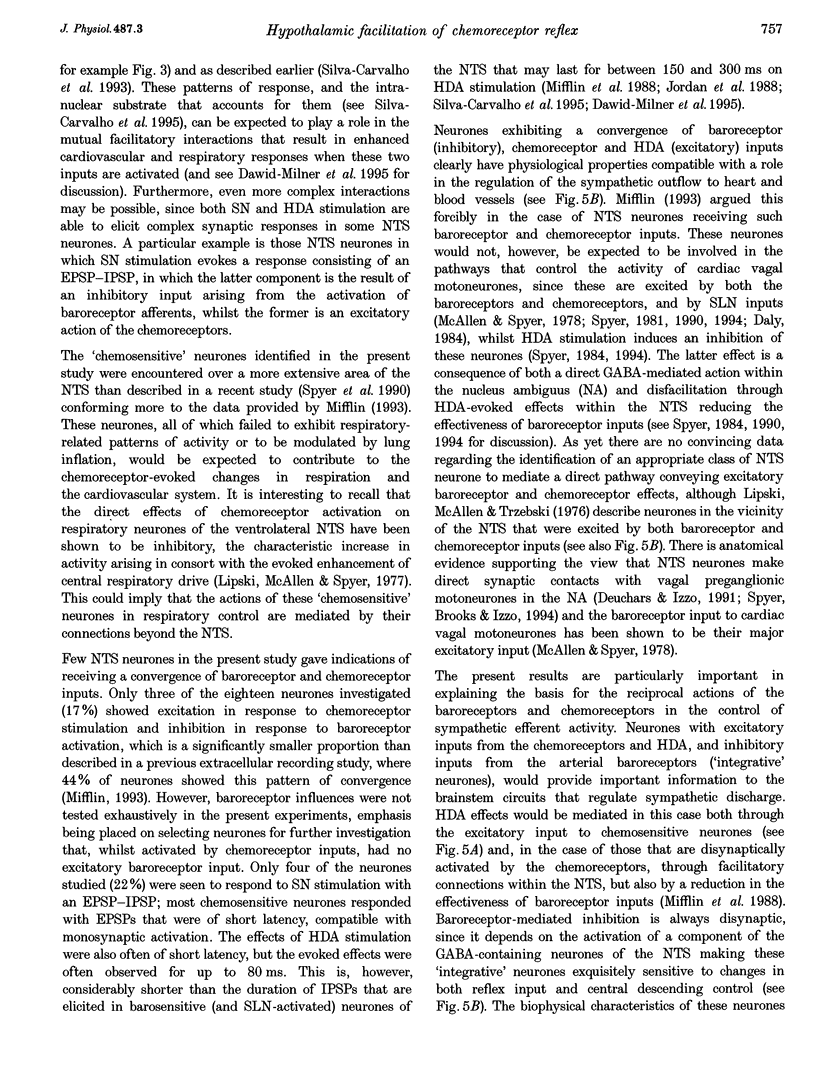
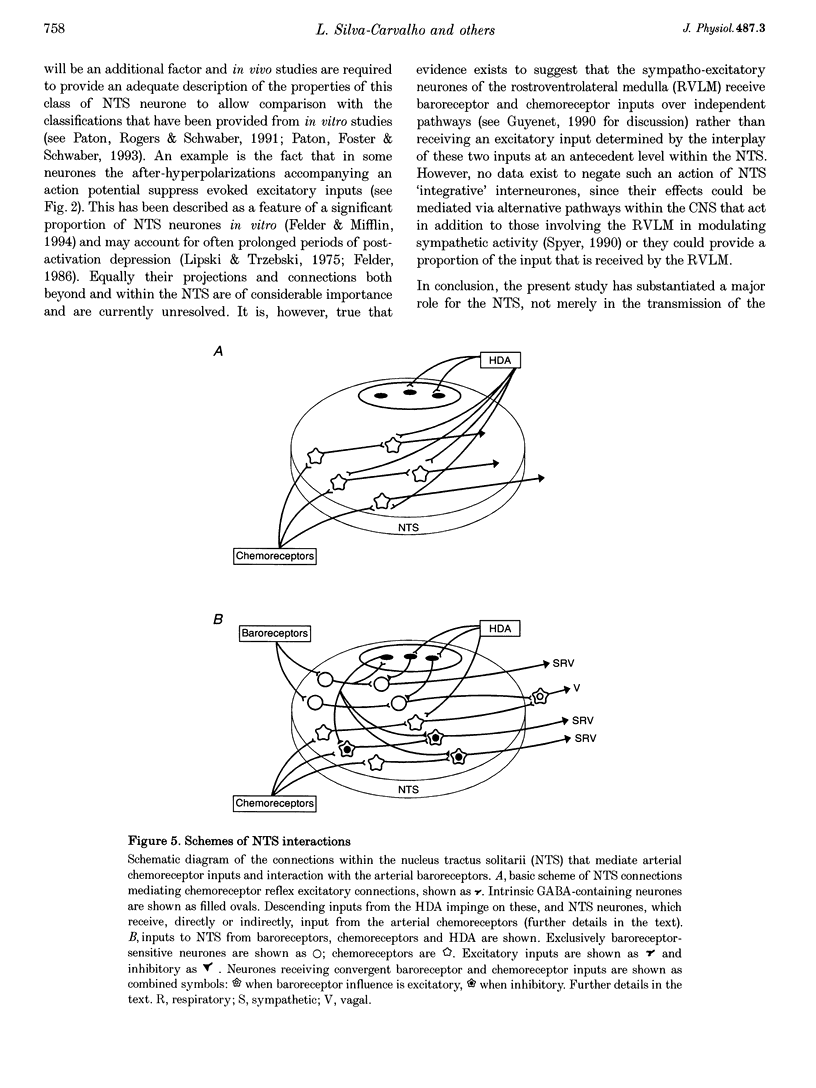

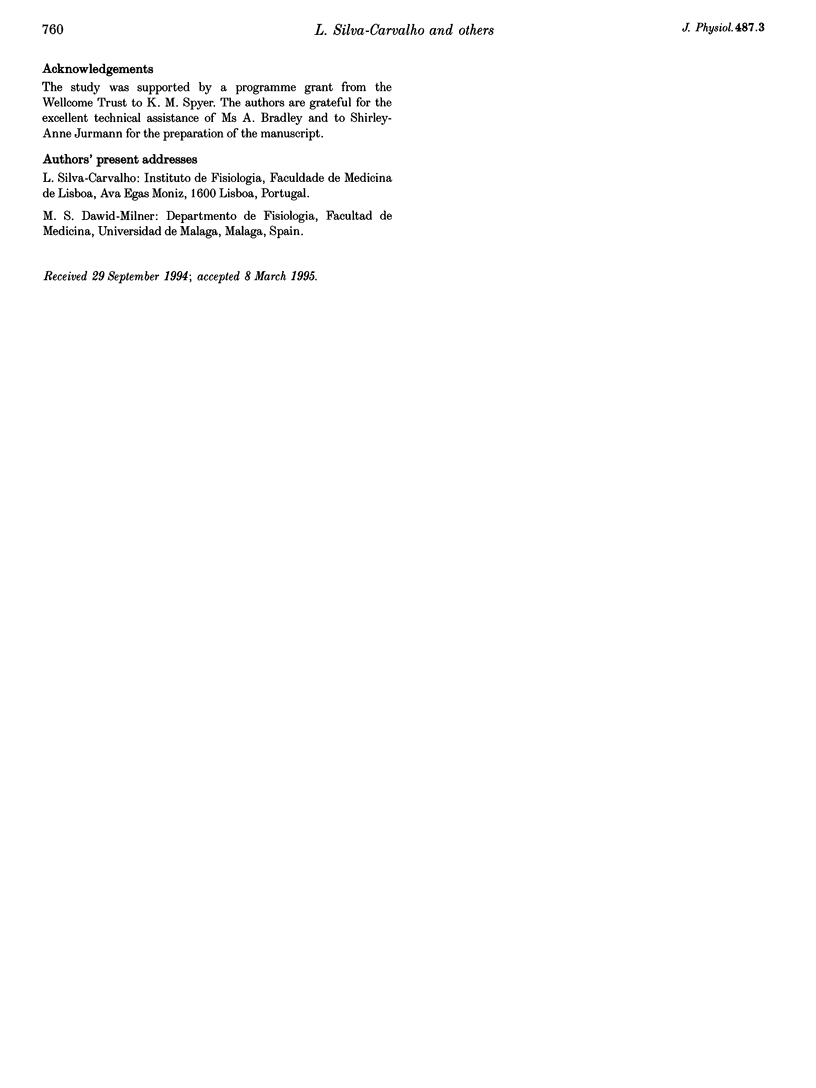
Selected References
These references are in PubMed. This may not be the complete list of references from this article.
- Dawid-Milner M. S., Silva-Carvalho L., Goldsmith G. E., Spyer K. M. Hypothalamic modulation of laryngeal reflexes in the anaesthetized cat: role of the nucleus tractus solitarii. J Physiol. 1995 Sep 15;487(Pt 3):739–749. doi: 10.1113/jphysiol.1995.sp020914. [DOI] [PMC free article] [PubMed] [Google Scholar]
- Donoghue S., Felder R. B., Jordan D., Spyer K. M. The central projections of carotid baroreceptors and chemoreceptors in the cat: a neurophysiological study. J Physiol. 1984 Feb;347:397–409. doi: 10.1113/jphysiol.1984.sp015072. [DOI] [PMC free article] [PubMed] [Google Scholar]
- Felder R. B. Excitatory and inhibitory interactions among renal a cardiovascular afferent nerves in dorsomedial medulla. Am J Physiol. 1986 Apr;250(4 Pt 2):R580–R588. doi: 10.1152/ajpregu.1986.250.4.R580. [DOI] [PubMed] [Google Scholar]
- Jordan D., Mifflin S. W., Spyer K. M. Hypothalamic inhibition of neurones in the nucleus tractus solitarius of the cat is GABA mediated. J Physiol. 1988 May;399:389–404. doi: 10.1113/jphysiol.1988.sp017087. [DOI] [PMC free article] [PubMed] [Google Scholar]
- Lipski J., McAllen R. M., Spyer K. M. The carotid chemoreceptor input to the respiratory neurones of the nucleus of tractus solitarus. J Physiol. 1977 Aug;269(3):797–810. doi: 10.1113/jphysiol.1977.sp011930. [DOI] [PMC free article] [PubMed] [Google Scholar]
- Lipski J., McAllen R. M., Trzebski A. Carotid baroreceptor and chemoreceptor inputs onto single medullary neurones. Brain Res. 1976 Apr 30;107(1):132–136. doi: 10.1016/0006-8993(76)90101-3. [DOI] [PubMed] [Google Scholar]
- Lipski J., Trzebski A. Bulbo-spinal neurons activated by baroreceptor afferents and their possible role in inhibition of preganglionic sympathetic neurons. Pflugers Arch. 1975 Apr 29;356(2):181–192. doi: 10.1007/BF00584297. [DOI] [PubMed] [Google Scholar]
- McAllen R. M., Spyer K. M. The baroreceptor input to cardiac vagal motoneurones. J Physiol. 1978 Sep;282:365–374. doi: 10.1113/jphysiol.1978.sp012469. [DOI] [PMC free article] [PubMed] [Google Scholar]
- Mifflin S. W. Arterial chemoreceptor input to nucleus tractus solitarius. Am J Physiol. 1992 Aug;263(2 Pt 2):R368–R375. doi: 10.1152/ajpregu.1992.263.2.R368. [DOI] [PubMed] [Google Scholar]
- Paton J. F., Rogers W. T., Schwaber J. S. Tonically rhythmic neurons within a cardiorespiratory region of the nucleus tractus solitarii of the rat. J Neurophysiol. 1991 Sep;66(3):824–838. doi: 10.1152/jn.1991.66.3.824. [DOI] [PubMed] [Google Scholar]
- Silva-Carvalho L., Dawid-Milner M. S., Goldsmith G. E., Spyer K. M. Hypothalamic-evoked effects in cat nucleus tractus solitarius facilitating chemoreceptor reflexes. Exp Physiol. 1993 May;78(3):425–428. doi: 10.1113/expphysiol.1993.sp003696. [DOI] [PubMed] [Google Scholar]
- Silva-Carvalho L., Dawid-Milner M. S., Spyer K. M. The pattern of excitatory inputs to the nucleus tractus solitarii evoked on stimulation in the hypothalamic defence area in the cat. J Physiol. 1995 Sep 15;487(Pt 3):727–737. doi: 10.1113/jphysiol.1995.sp020913. [DOI] [PMC free article] [PubMed] [Google Scholar]
- Spyer K. M. Annual review prize lecture. Central nervous mechanisms contributing to cardiovascular control. J Physiol. 1994 Jan 1;474(1):1–19. doi: 10.1113/jphysiol.1994.sp019997. [DOI] [PMC free article] [PubMed] [Google Scholar]
- Spyer K. M. Neural organisation and control of the baroreceptor reflex. Rev Physiol Biochem Pharmacol. 1981;88:24–124. [PubMed] [Google Scholar]


